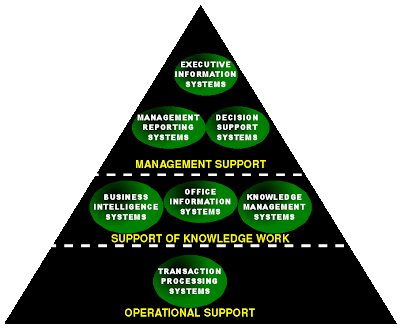In The Name of Allah
These weeks we did not have that much activities due to Lap session classes cancellation or because we did not have enough time to do any for preparing students to do the IT Report.
I have learnt many new concepts about information systems in this session.
System a set of elements or components and have inputs, processing mechanism,
outputs and feedback.
Information System Is
a application of computer based Information Technology, in other words, it it a combination of
hardware, software, infrastructure and trained personnel and used to facilitate
planning, control, coordination and decision making in an organization.
TYPES OF IS:
1. Transaction Processing System.
2. Decision Support System.
3. Expert Support System.
4.Management Information System.
5. Office Automation System.
COMPONENTS OF CBIS:
1. Procedure
2. Database
3. Hardware
4. Software
5. Telecommunication
6. People
The following are the four main types of Information Systems:
1.Transaction Processing System
it records the data from daily
operation throughout all the departments in the organization. Where all the
departments are connected through the TPS in providing vital information to the
top management levels in the organization.
Features Of TPS
·
presence
of at least one TPS in each department
·
it
is mostly used by supervisors
·
it
is used to monitor, collect, store, and process data generated form business
transactions
·
it
is the backbone of any organization information system.
2.Management
Information System
It is an integrated device that provides the manager and decision makers with information to help achieve organizational goals.
Functions Of MIS
·
it
helps the organization to achieve its goals
·
it
also provides right information to the right people at the right time and
format
Characteristics of MIS
·
it
is used by middle managerial level
·
it
produces several kinds of reports like summary reports, demand reports,
periodic reports
·
it
supports programmed decisions and problems
·
it
uses internal data stored in computer system it being TPS.
3.Decision Support System
An orginized collection of people, procedures, database and devic used to support problem-specific decision making. It also provides analysis.
Characteristics of DSS
·
it
consists of both internal input it being TPS and external input these are
sources from other fields like research.
·
it
supports unstructured problems
·
it
is mainly used by the tactical managers
·
it
consists of four main parts; users, software, data, decision module ie
tactical, operational and strategic module.
4.Executive Support
System
it is mainly used to summarise all the information collected from other departements inorder to steer the wheel of success in organizational planning and management.
Characteristics of ESS
·
it
combines all Transaction Processing System, Management Information System and
Decision Support System.
·
it
is only used by senior management only
·
it
uses both internal and external data sources
·
it
provides a summary about the orginazation
5. Expert System
it produces special knowledge in special fields with the use of Artificial Intelligence. this kind of system can be used by anyone. example of such a system is the MRI in hospitals where it gives a brief account of the internal functioning and state of ones internal organs.
other types of IS are:
1.
Office
Automation System eg Excel.
2.
Enterprise
Resource System.
3.
Business
System.
4.
Vision
System eg finger print caption.
Finally, was very useful for me, because I have got to know many things about IT and I am still in my way to learn more and more by Allah Willing.

